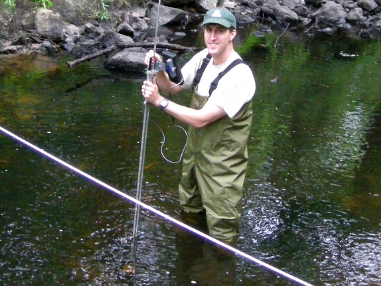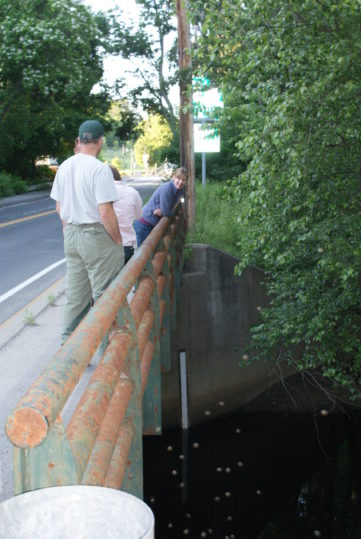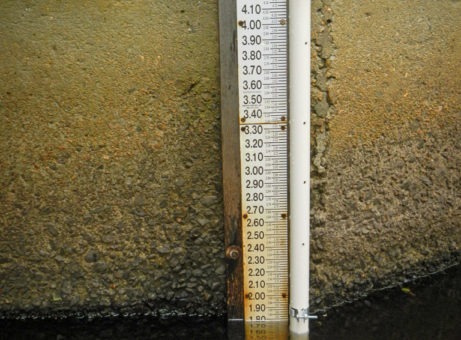STREAMFLOW MONITORING
Having adequate amounts of flowing water is essential for the health of rivers and streams
OVERVIEW
Streamflow is the rate at which water is carried by rivers and streams. The Ipswich River has a history of low flow problems from water withdrawals, so measuring streamflow is important to understanding low flow impacts. The United State Geologic Survey (USGS) maintains two real-time flow gages in South Middleton and Ipswich. The Streamflow Monitoring program consists of 3 additional gages: Martins Brook and the Ipswich River in North Reading and Fish Brook in Boxford (left). These gages were established and managed by the Massachusetts Division of Ecological Restoration Streamflow Program under the statewide RIFLS (River Instream Flow Stewards) program. Management of the gages was taken over by IRWA in 2022. These sites are used to monitor flows where data is desirable and not otherwise available. The North Reading gages cover Martins Brook and the upper Ipswich River, while the Fish Brook gage documents flows for this important tributary.
PROGRAM DESCRIPTION
Volunteers read a staff gage from a bridge at one or more sites at least once a week (left) and enter the data on the RIFLS website. The depth reading is automatically converted to a flow reading in cubic feet per second (cfs) by what is known as a rating curve. Flow is directly measured at each site over the course of the year to check the relationship between the gage depth and flow. This is done by measuring flow across the channel at known intervals and depths using a flow meter and wading rod (right). The individual readings are added up to give a total flow reading. Data loggers are also present at each site that continuously record pressure and this data is analyzed to produce a continuous record of flow data.

HOW CAN I HELP?
We are always looking for new volunteers for this program to read a staff gage or assist with occasional field work. We are interested in volunteers who:
- Have a willingness to commit to reading a gage at least once each week and entering data and photos to the RIFLS website. Having binoculars is needed to read a gage.
- A long-term commitment is a plus.
- Assisting with flow monitoring in the field is an option, but having waders is needed.
Interested in volunteering? Please contact Programs Coordinator Ryan at [email protected]

